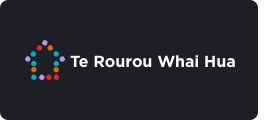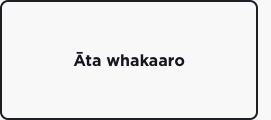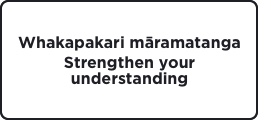3. Support your mahi (Āta whakaaro)

|
The resources in this section could be used in your role as an LSC to support teams in:
|
||
|
Some of the links on this page are using tools that have been developed in other parts of the world. When looking at these tools it will be important to think about them from an Aotearoa perspective. What language is used, how are they culturally sustaining, how are whānau and ākonga visible? How might they be used in ways that are mana-enhancing and relevant to our unique contexts? |
||
Āta whakaaro conversations |
||
|
Using Te Huia and SETT can help LSCs to guide conversations with teams. Click on each image to learn more about the types of questions that help teams make sense of the information they have gathered and start to see the connections and relationships between the information. |
||
|
See full image here |
|
|
|
Data becomes much more powerful when leaders, teachers, and students engage with the data and have “data conversations,” or “data chats.” During these conversations, leaders and teachers identify strengths, areas for growth, goals, and specific actions. For leaders and teachers, these conversations help unpack what the data means and decide what to do about it. - Curriculum Associates 2019 |
||
Facilitating data-driven conversations |
||
|
This set of templates (Curriculum Associates 2019) may be useful in thinking about how to use data in conversations as you and your teams make sense of the information gathered in kohikohi. |
||
|
Network for College Success is an organisation that envisions the transformation of public high schools in the USA to communities of powerful learning for students and educators. There are two tools that can support equity of voice and encourage teams to describe data, make inferences, and share implication for future work. |
||
| There’s always a subtle feeling of disempowerment in a problem, a feeling that all doors are shut...there’s a weariness and stuckness to it. Simply asking, “What’s the possibility we see in this situation?” can make a big difference. - David Isaacs | ||
The art of powerful questionsThe art of powerful questions is about focusing attention, connecting ideas, generating forward movement. Being mindful of these types of questions could help teams frame conversations around the information gathered together in positive and thoughtful ways.
Ask questions that focus collective attention, eg: ● What opportunities can we see in… ● What do we know so far/still need to learn? ● What are the dilemmas/opportunities? ● What assumptions do we need to test or challenge here in thinking about…
Ask questions that connect ideas, eg: ● What’s emerging here? What new connections are we making? ● What surprised or challenged us? ● What’s missing from the picture so far? ● What do we need more clarity about? ● What’s the next level of thinking we need to do? ● What’s the one thing that hasn’t yet been said?
Ask questions that create forward movement, eg: ● What’s possible here and who cares about it? ● What needs our immediate attention going forward? ● If our success was completely guaranteed, what bold steps might we choose? ● How can we support each other? ● What unique contribution does each of us make?
Source: The art of powerful questions; Catalyzing insight, innovation and action, Eric E Vogt, Juanita Brown, David Isaacs
|
||
|
Reflective Questions:
|
||
| To access resources and links to 'strengthen your understanding' of āta whakaaro click on the tab below. | ||



